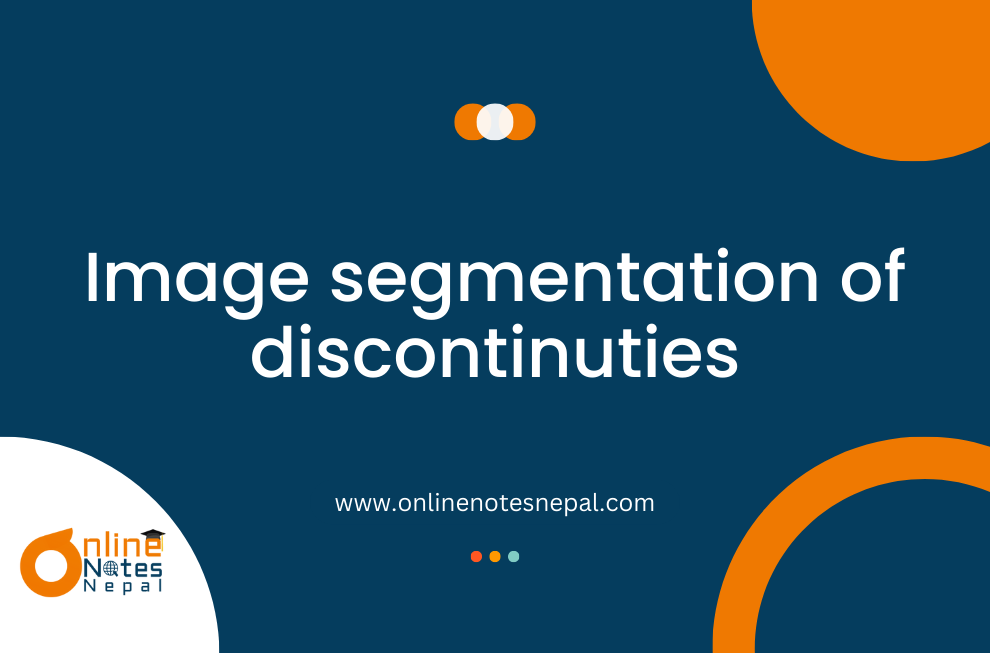Published by: Neha Khadka
Published date: 23 Jul 2024

The goal of image segmentation of discontinuities is to recognize and isolate sudden changes in image intensity that correspond to objects such as edges, lines, and points. These breaks frequently line up with important features or edges in an image.
Point Detection Mask-based method: Every pixel has a tiny mask applied to it. A point is recorded if the reaction is greater than a threshold.
Statistical techniques: In the intensity distribution, points that stand out can be found.
Line Recognition
Hough transform: A potent method that maps picture points into a parameter space in order to find lines.
Methods based on the edge: Edge maps can be used to extract line segments using grouping or linking algorithms.
Edge Detection Operators with a gradient basis: To highlight edges, compute the picture gradient (e.g., Sobel, Prewitt, Canny).
Gaussian Laplacian (LoG): detects blobs as well as edges.
Noise: The identification of discontinuities can be greatly impacted by image noise. Techniques for reducing noise, such filtering, are frequently required.
Thresholding: Selecting the right thresholds for line and point identification can be difficult.
Edge linking: It might be difficult to join edge segments into recognizable contours, particularly in noisy images.
Computational efficiency: For large photos, some methods, such as the Hough transform, might be computationally costly.